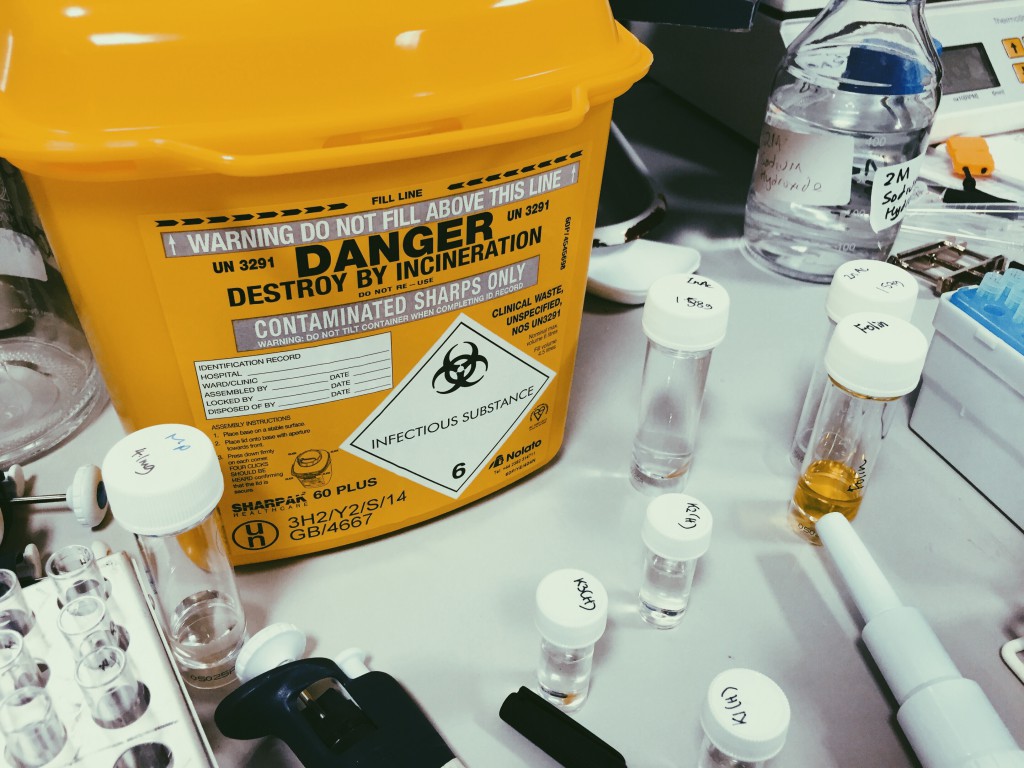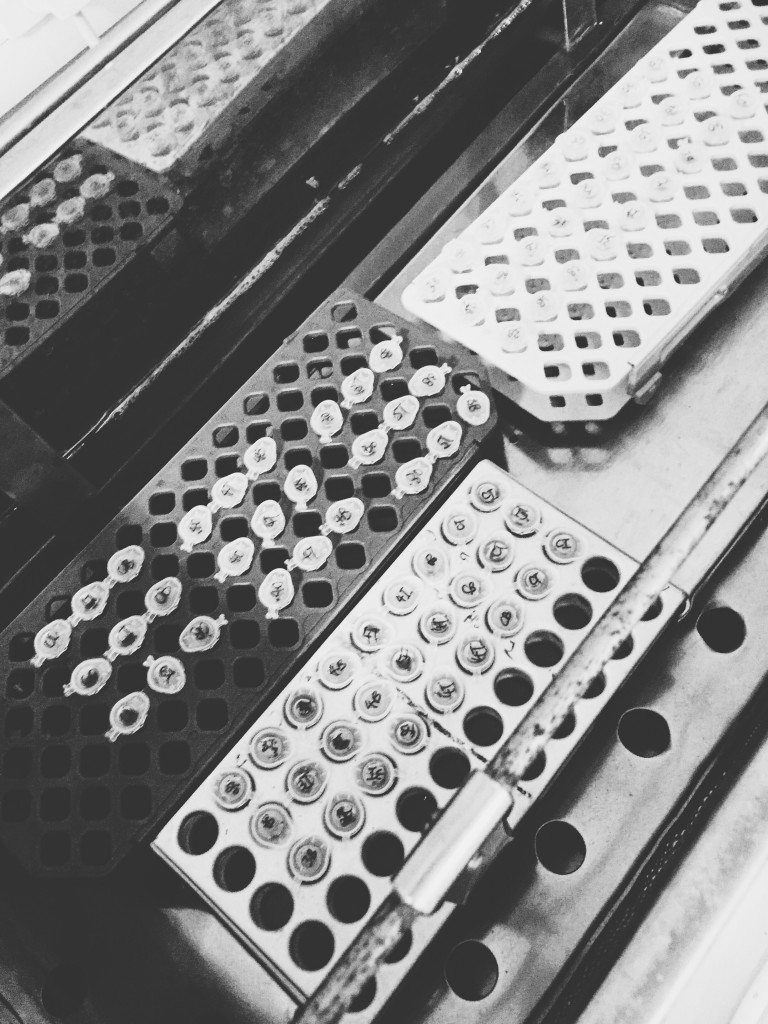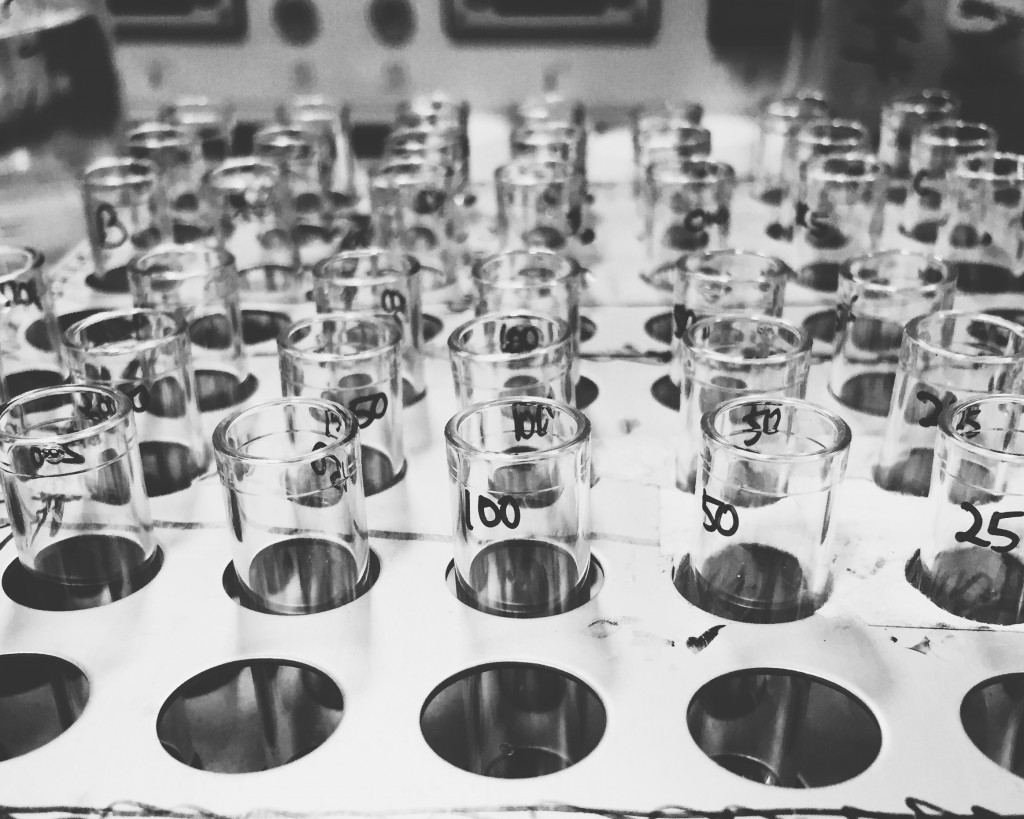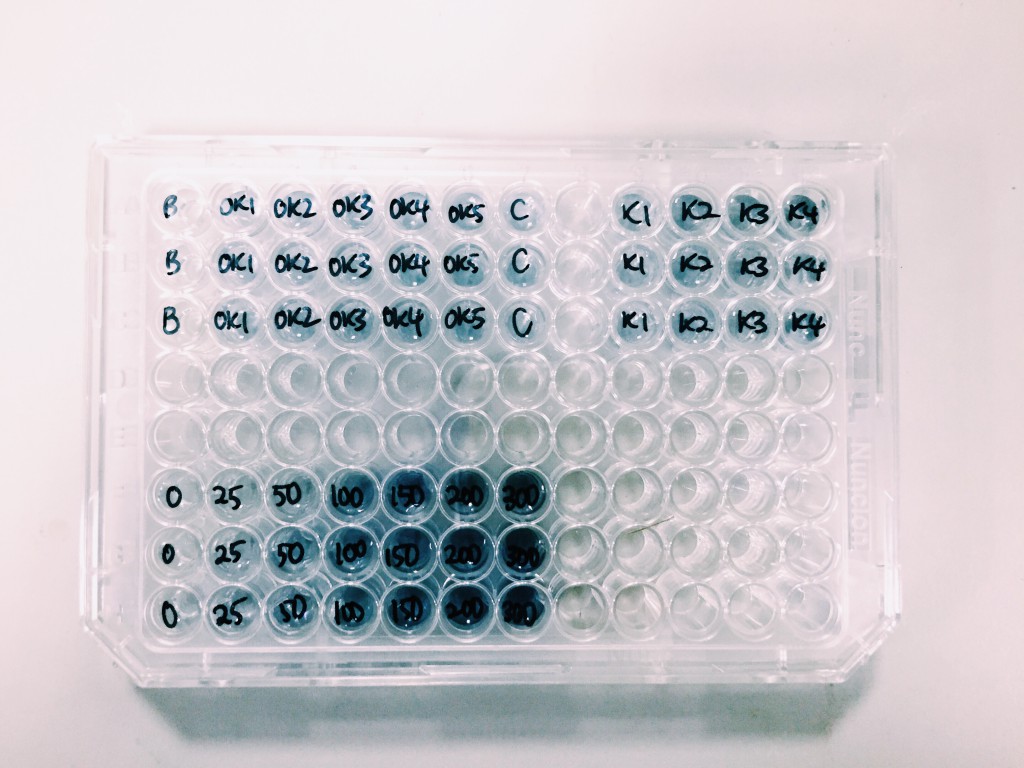March 16, 2015, by Olivia
The Lab Sessions
As you may already know from my previous posts on the blog, I am currently in the midst of my research project for which I will have to write up a 7000-word dissertation. I consider myself as one of the lucky ones as I only have to write up what my school calls a “mini-dissertation” which is worth 40 credits. However, some of my colleagues carrying out research projects abroad have much bulkier 60-credit dissertations to do.
Since it is British Science Week I thought I would share a little about my research project and what I was getting up to in the laboratory. For starters my project is on the role of hydrogen sulphide in disease and ageing. You may be surprised as hydrogen sulphide is more commonly known as a toxic gas, while that is true scientists have discovered that the body does produce this gas internally but at much lower concentrations. The levels of hydrogen sulphide in the body are low enough that they have beneficial roles such as antioxidants, anti-inflammatory agents and some also say anti-ageing as it slows down some of the processes that contribute to ageing. I won’t go into too much detail as I am still reading around the subject area myself! However I find it fascinating that a gas that we once thought of as poisonous was actually kicking around inside the human body doing some good!
The theory is that in ageing or when people are in various disease, they body produces less hydrogen sulphide and this contributes to the pathology of the disease. Therefore in the experiments that I am running, we run the same tests on tissue fractions from healthy young rats and then old obese rates. Some of what I have been doing in the lab is to stimulate an environment that is suitable for the tissue fractions that we use to produce hydrogen sulphide.
We use various methods to detect the levels of hydrogen sulphide gas present and then there’s lots of calculations from there to turn the data into useful information. If there is one thing I’ve learnt, (other than the science-y bits of my project of course) is how to pipette quickly and accurately. Before I started I did not anticipate the amount of pipetting that was involved in research projects. At one point in my latest lab session I had to take a break as I could no longer feel my fingers. Numb fingers = bad pipetting.
However it is all worth it in the end when you get a good final result. Sometimes we even get to do assays where we get pretty colour development like this one below which is called the Lowry Assay to determine the amount of protein in a solution.
Hope you enjoyed this post and that you all have a lovely week ahead!





[…] on from Olivia’s post about her research project, I am also doing a science-themed post this week in the spirit of […]